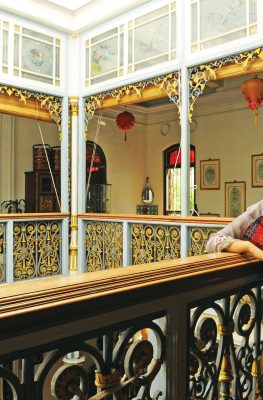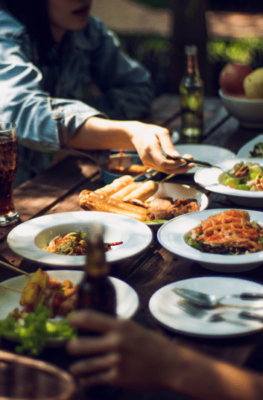Published on February 1, 2018

The suitcase fleet in Changi Airport, Singapore. Travelling Imageman/Creative Commons
Think you’ve prepared everything you need for your trip to Southeast Asia? Think again: measure your packed luggage against these tips from Southeast Asia travel experts, and you might find yourself (and your gear) wanting. Read up, and get up to speed on smart travel in Southeast Asia before you check into your flight!
Tip #1: You need less stuff than you think.
That 30-kilo checked-in bag for your two-week itinerary? Forget it. Shandos Cleaver of Travelnuity (Facebook|Instagram) thinks Southeast Asia is the perfect travel area to practice carry-on only – limiting one’s luggage to a small case weighing no more than 10 kilos.
“After spending six months travelling around nearly every country in South East Asia last year, my top packing tip is to do everything possible to only travel with carry-on luggage,” Shandos explains. “With the perpetually warm weather, it’s the easiest destination to manage this.”
Shandos figures the basics can carry you through: “What else do you really need other than a couple of shirts and shorts, a pair of swimmers, flip-flops and a few travel-sized toiletries?” she asks rhetorically. “Okay, I’m a wuss so I packed a light sweater (mainly for air-conditioned transport), but my other half skipped entirely.”
Traveling with carry-on only carries a few signal benefits, Shandos says. “One of the biggest advantages is not paying anything extra for luggage on cheap budget flights,” she says. “Plus it’s pretty nice to waltz straight off the plane and not stop by the baggage carousel, worrying whether your luggage has gone missing this time.
“It also makes it easier to get around the rest of the time, whether that’s walking along ramshackle footpaths to hotels or hostels, or squeezing into crowded mini-vans. Do it once and you’ll be converted!”
Tip #2: Bring your own mask & snorkel.
Like Shandos, Campbell Louw of Stingy Nomads (Instagram) has scaled his baggage down to the very bare essentials – but he simply won’t travel without a couple of basics that most people would normally rent.
“Something we never travel without is a mask and snorkel,” Campbell explains. “Scuba diving and snorkelling in Southeast Asia is world class and there are many famous reefs and dive sites. Traveling with your own mask and snorkel is important for comfort and can save you money.”
Carrying your own mask and snorkel is a good compromise from lugging your own dive gear around, Campbell says. “A mask is a very personal piece of equipment since all mask don’t fit well on all faces,” he explains. “It is terrible to pay a lot of money to dive a once in a life time dive spot and your mask keeps leaking.
“We often save money by carrying our own mask and snorkel by not having to rent snorkelling gear when entering from the shore on many of the islands in Southeast Asia,” he continues. “If we went scuba diving somewhere and need fins for snorkelling the dive operator we used usually borrows us fins free of charge which we use with our own mask and snorkel.”

Snorkeling in Indonesia. Image courtesy of the Stingy Nomads.
Tip #3: Don’t pack it, buy it here (within limits).
With a proliferation of cheap knockoff clothing, secondhand shops and import overrun stores, packing clothes to bring to Southeast Asia can be almost irrelevant: you can buy your clothing here instead, saving you valuable luggage space. But Chris Backe of One Weird Globe (Twitter) says that’s not for everyone.
“Packing for Thailand means packing for the heat — but more importantly, packing for your size,” Chris says. “At ~181cm and around 100kg, I’m not nearly as skinny as the average Thai, which means finding clothes that fit well is an issue.”
In Chris’ plus-size-for-Southeast-Asia experience, “you were limited to either cheap crap made in SEA or expensive imported name brands… and even then there’s less guarantee you’ll be covered,” he says. Still, if you’re starting out in Thailand before branching out to the rest of Southeast Asia, Chris recommends you “check out Bangkok’s malls for the best chance of success, but the city’s older markets (think Chatuchak Market) might also work,” he says. “Chiang Mai has several large, modern, and Western-friendly malls, though that didn’t guarantee a lot of options of the larger variety when I lived there.”
Tip #4: Pack everything in a waterproof backpack.
The “dry” season is no guarantee against sudden showers: that’s why Rand Shoaf of the Well-Traveled Mile (Facebook|Instagram) swears by waterproof backpacks. “Traveling with a waterproof backpack has been a must for me when exploring Southeast Asia, especially during monsoon season,” he tells us. “Using one has saved me several times from having all my gear drenched by rain.”
Travelers with electronics – and that’s pretty much everyone these days – will appreciate having a waterproof bag when the rains hit. “The last thing you want is to get caught out in a downpour during rainy months,” Rand explains. “With a fully waterproof backpack, or even just a dry bag within your larger pack, your gear is safely stored behind a waterproof barrier. Although you may get soaked, your gear won’t.
“I learned this lesson when my bag was transferred from under bus cargo storage to the rooftop luggage rack during a wet and rainy night bus journey in Vietnam,” he remembers.






